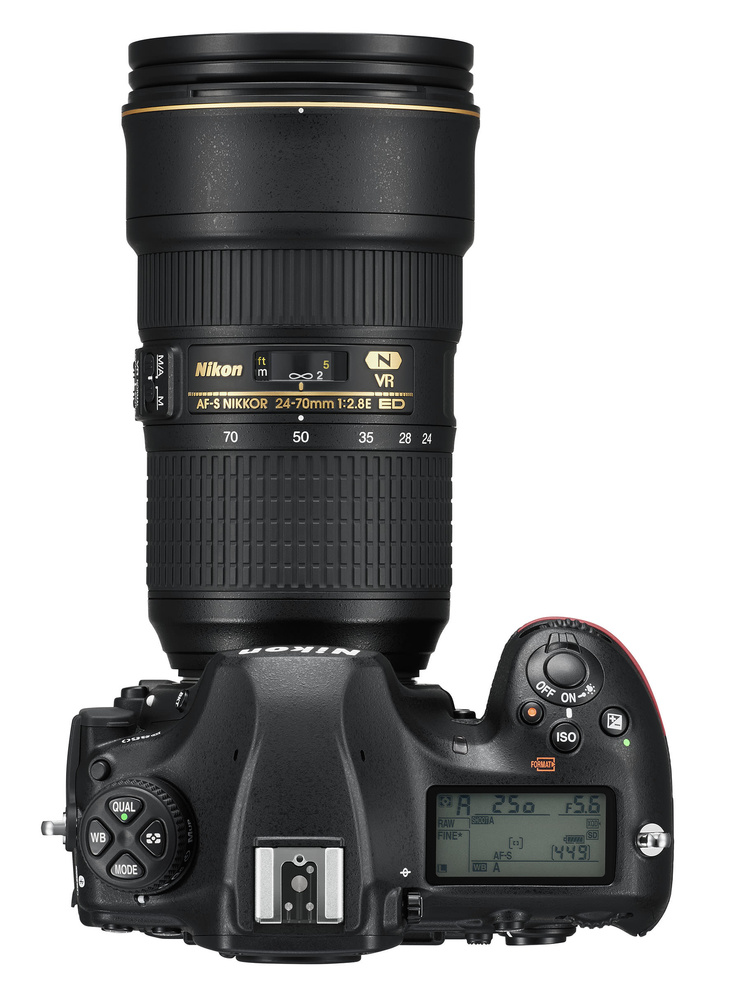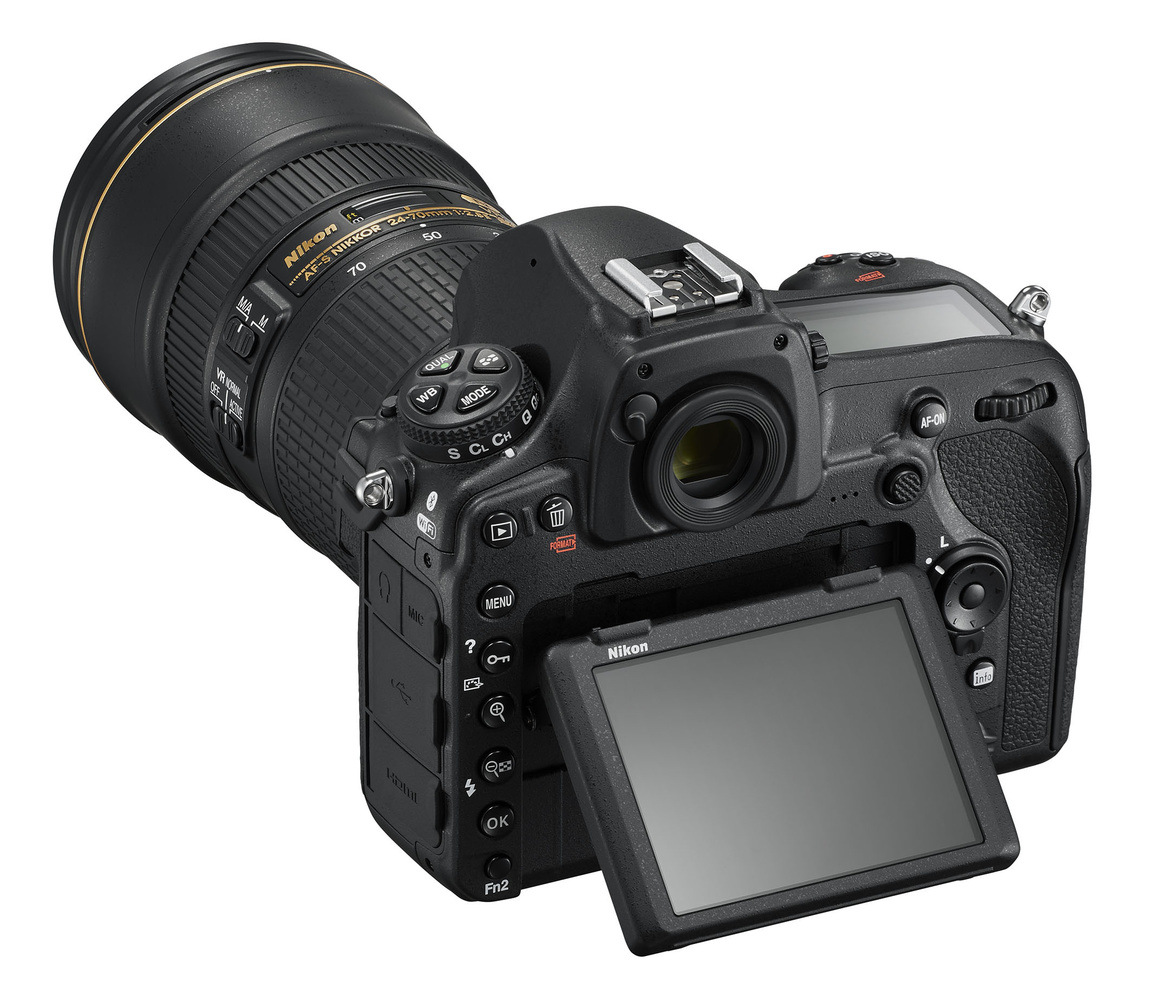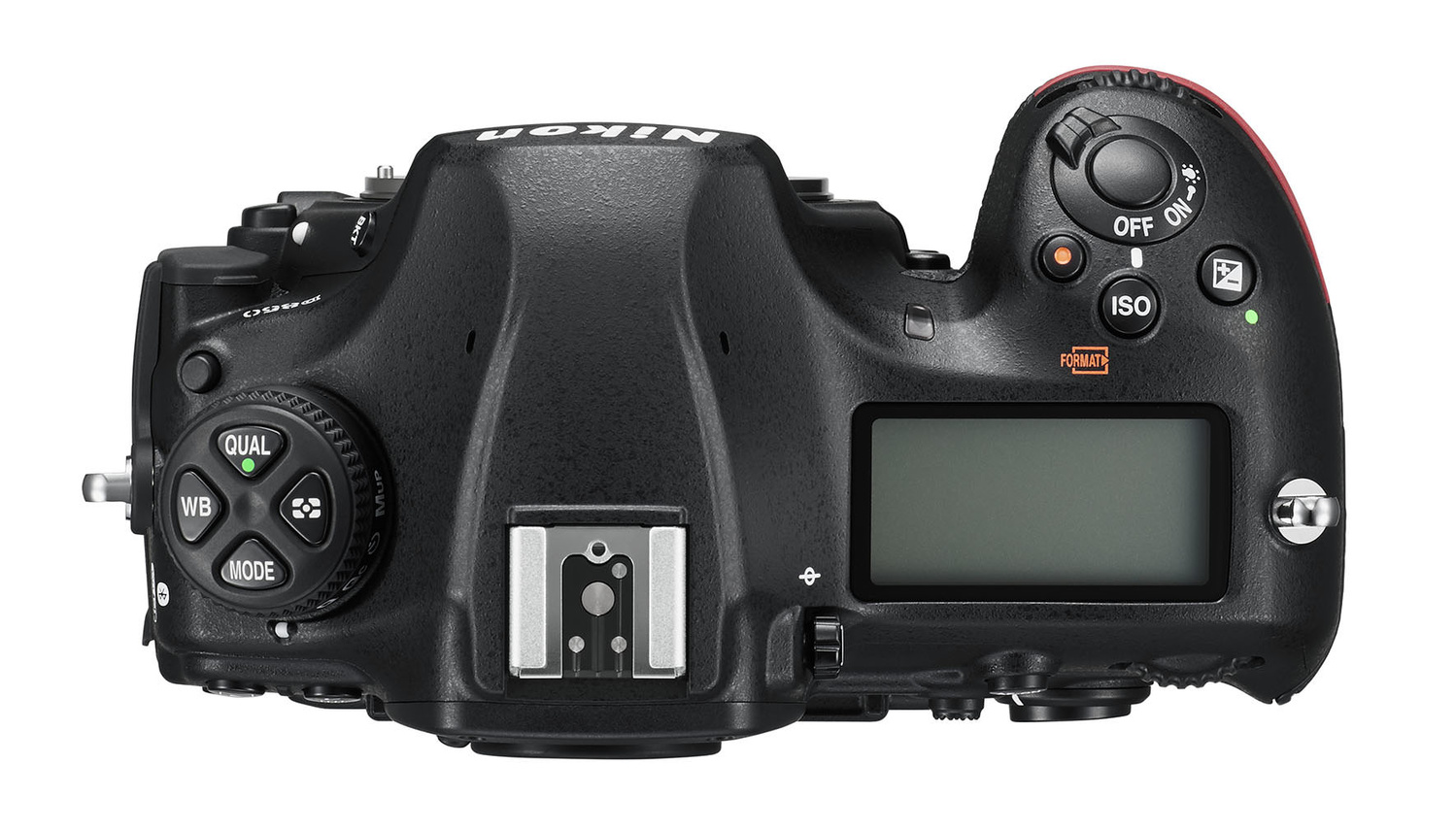If you try to pinpoint a single reason that the D850 is creating as much buzz as it is, it would be nearly impossible. This isn’t an amazing camera that has a singular standout feature. It’s the precisely and perfectly juxtaposed array of many new features, big and small, that culminate in the D850's success as a standout camera. Here’s a quick dive into some of the top, more obscure tricks the sold-out D850 brings to Nikon’s top line, how much they’ll really help your photography, and what limitations these features have.
Nikon recently published a rather large document about the D850, its features, how those features serve various types of photography, and those features stack up against those in the D750 and D5. Here, Nikon outlines every new feature of the D850 in a very thorough guide (some of it does repeat). But this also gives us an opportunity to dissect some of the capabilities in the D850 that will make it a marvelous camera to shoot with.
1. Unified Layout with D5
Of course, everything about the D850 is about the shooting experience. One of the aspects that makes this camera so well thought out is the fact that the right-side sub-selector is in the same position on the D850 as it is on the D5. Despite the differing form factors, this creates an easier and more natural transition for users of both systems who get the pleasure of a more unified experience with the main tools of their trade.

2. Battery Life
Class-leading DSLR brands aren’t known for coming up short on battery life claims. But Nikon has taken the already generous battery life of the D810 and improved it by more than 50 percent (from 1,200 to 1,840 shots on a single charge). Needless to say, this isn’t a small bump. It completely changes the game. Of course, battery life can be further extended with the MB-D18 battery grip.
3. Focus Stacking
While you’ll still need third-party software to compile the images, Nikon’s focus stacking feature will automatically take shots at a user-specified interval while stepping focus automatically in order to accurately and sharply capture photos with a combined range of depth of field that covers the entire image area. Users don’t need to worry about depth of field at various apertures for macro or even landscape work with closer foreground subject matter, as the D850 automatically adjusts focus at precisely calculated points to cover the entire range of focus for each scene.
4. Focus Peaking
The D850 features both manual-focus mode confirmation through the viewfinder and focus peaking in live view during both video recording and shooting stills. Unfortunately, however, this feature is not available when shooting 4K video, which certainly limits its usefulness.
5. Electronic Vibration Reduction
If there’s one thing the D850 is missing that the latest mirrorless cameras have really jumped on, it’s in-body image stabilization. However, Nikon combats this partially with an electronic version. An unfortunate aspect to this is that the D850 only does this for video resolutions under 4K. It would have been great to see a just-slightly-cropped sensor area still shoot 4K, but with at least a small amount of stabilization enabled. Moreover, a similar feature would have been great to see with various, slightly-cropped still images. These limitations naturally hold back the usefulness of this feature, but it's still nice to have something.

6. Silent Shooting
With the mirror locked up and in live view, the D850 has the capability to use an electronic shutter for completely silent shooting at up to 6 fps at full resolution or up to 30 fps at 8.6 megapixels in DX mode. This is useful for sports that require silence, film sets, and other scenarios where bystanders may be sensitive to sound.
One drawback that still plagues electronic shutter features is the presence of rolling shutter when capturing moving subjects. There is no word on the capture or scan speed of this new sensor, but for comparison, Hasselblad lists the X1D-50c’s sensor takes 300ms to scan across the entire sensor in its recently updated firmware that allows for shooting with an electronic shutter.
7. Silent Interval Timer Shooting
Perhaps most exciting about the electronic shutter feature is that it can be employed in a silent interval timer shooting mode. This locks the mirror up and keeps the mechanical shutter from moving at all during the entirety of a time-lapse capture. Of course, the lack of motion translates to the sharpest image capture possible. But the lack of use of the mechanical shutter also means significantly less wear and tear on one of the most sensitive parts of the body. Don’t feel like putting 10,000 shots on your shutter for a simple time-lapse in your backyard as a test? No problem (although the shot counter may not necessarily reflect this).

8. Negative Scanning
Film is coming back in a big way. But film scanning options are expensive to have done professionally and to do yourself with few still-produced, reliable scanning options. The D850 solves this (potentially) with a new film scanning adapter that holds 35mm film at a proper distance for capturing analog images digitally. However nice this feature first seemed, further research seems to indicate the camera saves directly to Large, Fine JPEG images as opposed to raw images. This is disappointing, especially considering the additionally lost potential for HDR capture of each frame. Hopefully a firmware update will allow further flexibility in this regard by allowing for raw capture of any image for proper conversion later (although it wouldn't be necessary for slide film, most likely) or in-camera-processed TIFF files.
9. Enhanced Multiple Exposure
One rather annoying aspect of shooting with the in-camera multiple exposure setting is that you do not have the option to save the individual photos separately. Nikon has always combined all the images exposed (based on a user-determined number) in-camera. However, with the D850, images shot in this mode can also be saved separately to the card for combining later in post for more refined control over your multiple exposure compositions.
10. Natural Light Auto White Balance
A new Natural Light Auto white balance setting allows the D850 to set white balance more accurately for settings of “abnormal” white balance. This would help, for example, to keep skies under sunsets golden as opposed to cooling the image down to create a white sun and completely blue atmosphere.

11. Raw Batch Processing
For those working on the go with tight deadlines, the D850 can quickly process raw images into JPEGs on-demand from one card to another (each user-selectable). Shooting in standard raw gives the fastest camera performance. Even shooting in JPEG alone takes longer, as doing so requires the camera to further process and compress every image captured. Raw batch processing might be useful for creating a library of JPEGs to share or simply to have for any reason after having shot in raw all day.
12. In-Camera HDR
In a pinch, it may be helpful to have the D850’s in-camera HDR feature that combines images for higher dynamic range in scenes with bright highlights and deep shadows. However, this is a feature many may still prefer to do in post with separate images, and it’s unclear if the D850 will allow for any images shot in this mode to be saved separately as can be done now when shooting multiple exposures.
13. Fine-Tune AF
Fine-Tune AF makes it easy to adjust and calibrate focus for each lens in a matter of seconds. This isn’t new to the D850, but it’s a relatively new feature that’s particularly important in this body, as getting accurate focus will be more necessary than ever considering the incredible resolution of this nearly 46-megapixel sensor.
14. Pinpoint AF
This camera now allows one to choose an option to select a focus point 1/4 the size of the typical autofocus point. This is helpful for getting accurate autofocus when shooting subjects at extremely close distances or with extremely small points of interest (i.e., in macro photography and/or when one might want to focus on the tip of the stigma of a flower).
15. 0.75x Viewfinder Magnification
The prism finder in the D850 allows for the most magnified image of any DSLR viewfinder currently on the market. This is one of those features that might sound insignificant, but that in fact adds significantly to the user experience and is sure to set the standard for prism finder magnification.

16. In-Camera Image Cropping with Viewfinder Masking
The D850’s viewfinder has the ability to mask to standard 3:2, 1:1, and 5:4 ratios as well as to 1.2x and 1.5x DX crop image areas while capturing those areas specifically selected by the user. Nikon touts this as a nice way to shoot with consumption on various platforms (i.e., social media or magazine) in mind. Personally, I would prefer to keep this in my own mind and crop later from the full file, but it’s nice to know it’s there for an easier visualization. It’s unclear whether or not masking is possible while still capturing the entire FX image area, but it seems not to be.
17. Flicker Reduction in Artificial Light Sources
A new flicker reduction feature aids a photographer shooting in conditions lit by various light sources that do not emit a constant amount of light. The fluorescent lights in stadiums is a common scenario in which the D850’s new flicker reduction feature could help by automatically taking the photograph at the moment of highest light output. This may slow down continuous shooting slightly, as the camera may be waiting fractions of a second to take a photograph as the ambient light reaches its peak through the flicker, but it should mostly aid in consistent and accurate exposures at higher shutter speeds in these lighting conditions.
Furthermore, the feature works while shooting video by automatically sensing the rate of flicker and adjusting the shutter speed accordingly to compensate. If these features in both video and still shooting modes do as promised, this will be huge (if you’ve had this issue, you know how annoying it can be, not to mention it can often keep you from shooting at optimal shutter speeds for indoor sporting events).
There are plenty more features of the D850 that make it an amazing camera. Whether it's specific or not to the D850, did we get your favorite? If not, share it below.
The D850 is available for pre-order, but has sold out of its first-date shipment stock, so get in line quickly to prevent even longer waits.








Here I thought the Focus Stacking was going to be like the HDR feature (Is this really the first Nikon with in-camera HDR?), where the stacked image would be produced in-camera.
What's the EV range for in-camera HDR? On the 5DMkIV it's limited to +-3EV, and it will only shoot 3 brackets to combine to HDR. You can tell it to keep the original RAWs for each exposure, but the in-camera combined HDR is always output as a JPG. To me this makes the feature not very useful. I've found it better to use AEB where you can fine tune the EV stops and do up to 7 exposures. Wondering if Nikon is doing it the same way or if they are providing more options?
I will be testing this heavily when I get it for review. I'm curious about the overall implementation as well and to see how well it does. I imagine and kind of hope it will create a relatively flat file with a good amount of range from highlights to shadows. But we'll see...
Battery life improved over the D810 because the flash was deleted. CIPA uses flash heavily in their testing. Nikon used a similar tactic (slashing flash power) to make people think the D3400 had a big bump in battery life from its predecessor, too.
I'm personally digging the Large, Medium, and Small RAW files. 46 is a lot of megapixels and some egregious file sizes, so the freedom is a nice touch.
That's not new though is it, I thought that the D810 could do that (I don't own a D810).
This isn't new to the D850, but the hope is that the new S, M, and L raw options will be more useful and better compressed vs. file quality compared to how sRAW was historically for Nikon. It'll still be 12-bit for small and medium, but we'll have to test. Other Nikon cameras only have one sRAW option, though, and it really wasn't worth it. It was better to just shoot full-res with a compressed raw file...
Thank you Adam
VR (Vibration Reduction) is a feature of certain Nikon lenses.
You are unclear on the nature of this Nikon feature, stating that this is somehow an "electronic" version of in body stabilization. It's a lens solution, just like Canon, no? Perhaps VR lenses do not stabilize with older bodies? So any stabilized lens does what Nikon does: move one lens element around with motors, based on accelerations read off of sensors. It's "electronic" in that it uses electronic circuits - but if that is what you mean it would not be a new technology.
In my mind "electronic" stabilization would read image movement across the sensor and "move" the pixels virtually with no mechanical apparatus. If you have seen an A7RII taken apart you know it actually has rubber bands holding the sensor so it can be moved about mechanically. Happy to be corrected/clarified here.
VR in lenses isn't electronic at all. It's actually a physical change, as the elements inside the lens physically move to compensate for the photographer's handheld motion. Electronic VR in the body essentially makes use of the fact that the body can record video using a smaller area of the sensor, and then electronically "shift" that image around the sensor to compensate for a small amount of movement. It is usually not considered to be as effective as actual, physical vibration reduction/image stabilization and does not allow for recording from the full sensor area.
You doubled down on being unclear. I stated VR is mechanical (so your correction is odd) and I stated electronic stabilization is virtual ie at the sensor. You also automatically refer to video, as though that's taken for granted when in fact the baseline for the discussion is still images. Hence no clarification whatsoever except you point out you were talking about video. Thanks for your time, I'll look it up.
Both the article and Adam's reply above were perfectly clear to me: It is a video only feature that shifts the active pixels on the smaller than full sensor area used for video to compensate for camera movement.
That's a month old.
Wish they would include DCI (True 4K width) resolutions via firmware if they are indeed serious with video. Many complains were focused (no pun intended) on the lack or absence of Dual Pixel AF. In my observation, DPAF seems to take a hit in Dynamic Range when doing stills. IBIS, however, would have been nice, but may be tricky to implement with a Mirror Mechanism in place.
The focus stacking feature is a real gimmick for most scenarios, unless you have a lens that doesn't have focus breathing at all.
For macro it really is useless, you need a macro rail and have the camera approach/go away from your subject, not change focus.
Is there a shutter speed limit when doing time lapse with the mirror locked up?
E.g., the GH4 and GH5 have a 1sec limit so if you want to use a longer shutter, you have to use the mechanical shutter 😠
does anyone know if this holds more than one memory card and if wifi connectable
Yes. It has one high-speed SD card slot and another higher-speed XQD slot. It also has built-in Wi-Fi and Bluetooth that will work with a new version of SnapBridge (hopefully it's improved over previous versions).
Regarding the film scanning....
However nice this feature first seemed, further research seems to indicate the camera saves directly to Large, Fine JPEG images as opposed to raw images
The camera is processing these images. After the camera processes these images it is no longer a "raw" file. Just the same with in camera HDR -- that got saved as a jpg. If you want a RAW file, I'm sure you can take a true RAW photo of the negative, and turn it into a positive in post processing.
True. But TIFFs would have been helpful.
I am fairly certain that the Pentax K-1 has nearly all of these and it's over one year older and $1,000+ cheaper.